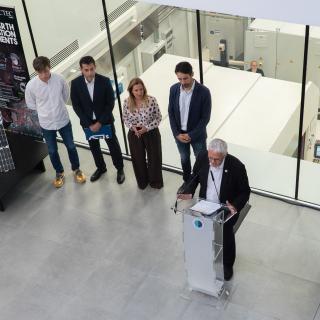The 19th scientific meeting of CARMENES, a collaboration of more than 100 scientists from 11 Spanish and German institutions aimed at studying extrasolar planets around M-type dwarf stars, the lowest mass stars, was held this week at the IACTEC facilities in La Laguna (Tenerife, Spain).
Since it became operational in 2016, CARMENES has analysed more than 360 such stars, leading to the discovery of more than 65 new planets, making it the most efficient instrument and mapper in the study of planets around very low-mass stars, with 30 % of the total number of planets discovered in this range.
The Instituto de Astrofísica Canarias (IAC) has been involved in the CARMENES instrument since its initial construction phases and IAC research staff have been part of the scientific coordination team and lead various working groups, such as those for photometric monitoring and candidate monitoring of the TESS satellite.
More than 50 scientists participated in this meeting, during which the latest actions aimed at improving the stability of the instrument and the latest scientific advances were shared, including the discovery of new rocky planets around M-type stars, multi-planetary systems, young planets and minineptunes suitable for the characterisation of their atmospheres. In addition to this research, studies are being carried out to characterise the activity of stars and to study the atmospheres of gaseous exoplanets.








